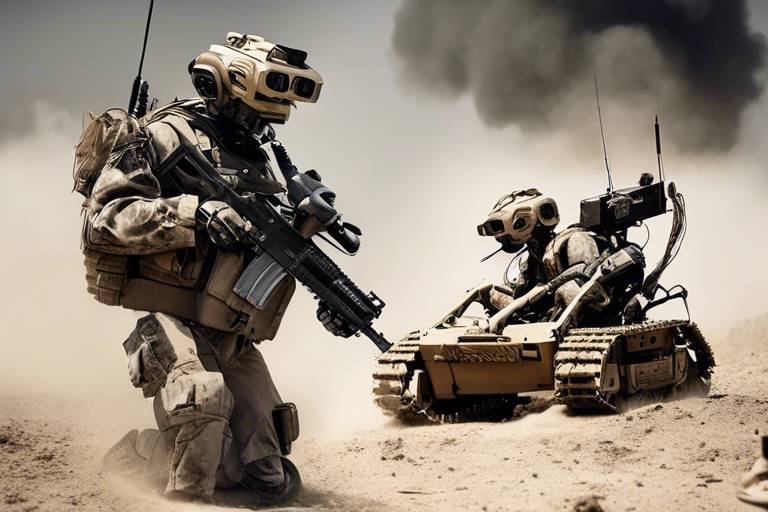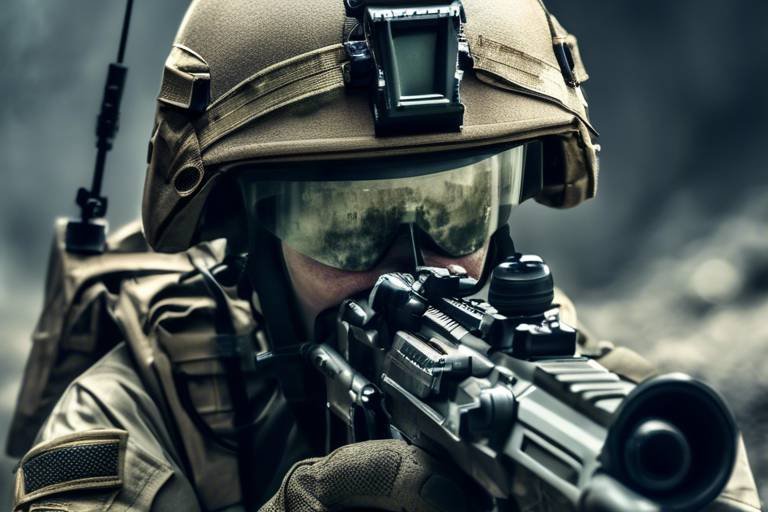Nanotechnology in Defense - Tiny Solutions for Big Problems
In today's rapidly evolving world, the need for advanced defense mechanisms has never been more critical. Nanotechnology, the manipulation of matter on an atomic or molecular scale, is stepping into the spotlight as a revolutionary force in military applications. Imagine a world where tiny particles can create massive changes in defense strategies, materials, and overall security measures. This article delves into the innovative applications of nanotechnology in defense, highlighting its potential to revolutionize military strategies, enhance materials, and improve overall security measures.
So, what exactly is nanotechnology? At its core, it involves the engineering of materials at a scale of 1 to 100 nanometers, which is about 1/100,000th the width of a human hair. This tiny scale allows scientists and engineers to create materials with extraordinary properties. In the realm of defense, these advancements are shaping modern military capabilities and strategies in ways we could only dream of a few decades ago. With the integration of nanotechnology, military forces can achieve unprecedented levels of efficiency and effectiveness, making it a game changer in the field.
The applications of nanotechnology in military equipment are as diverse as they are impactful. From developing lightweight materials that enhance mobility to creating advanced sensors that improve situational awareness, the potential is enormous. For instance, consider how nanotechnology can lead to the creation of materials that are not only lighter but also stronger than traditional options. This means soldiers can carry less weight while still being adequately protected, enhancing their operational capabilities.
One of the most exciting developments in this field is the use of nano-coatings. These coatings can protect military assets from environmental damage, corrosion, and wear. Imagine a soldier's gear that can withstand the harshest conditions without degrading over time. This durability ensures that military equipment remains reliable and effective, even in the most challenging environments. The benefits of nano-coatings extend beyond just protection; they can also enhance the performance of equipment, making them an essential component of modern military gear.
Another groundbreaking innovation is the development of self-healing materials. These materials can automatically repair damage, significantly extending the lifespan of critical defense equipment. Picture a vehicle that can mend its own scratches or a uniform that can seal itself after being torn. This capability not only reduces maintenance costs but also increases the operational readiness of military assets, allowing forces to respond more effectively in the field.
When it comes to soldier safety, lightweight armor solutions made possible by nanotechnology are a game changer. Traditional armor can be heavy and cumbersome, limiting a soldier's mobility. However, advancements in nanotechnology have led to the creation of armor that is both lightweight and highly protective. This means soldiers can move more freely and efficiently while still maintaining a high level of protection against threats. The fusion of safety and agility is crucial in modern combat scenarios, making this innovation particularly valuable.
The impact of nanotechnology extends beyond physical equipment into the realm of surveillance and reconnaissance. Miniaturized drones and sensors are revolutionizing how intelligence is gathered. These tiny devices can operate in environments where traditional equipment might fail, providing critical information to military strategists. Imagine a drone the size of a bird, capable of flying undetected while gathering high-resolution data. This capability enhances situational awareness and allows for more informed decision-making in the field.
Beyond equipment, nanotechnology is also making waves in military healthcare. The integration of nanotechnology into medical practices is transforming how soldiers receive care. From targeted drug delivery systems to advanced diagnostic tools, the potential for improving soldier health and recovery is immense. By utilizing nanocarriers that deliver medications directly to affected areas, treatment efficacy is enhanced while minimizing side effects. This precision medicine approach is crucial for ensuring that soldiers receive the best possible care, especially in high-stakes situations.
The development of targeted drug delivery systems is one of the most promising applications of nanotechnology in military healthcare. By using nanocarriers, medications can be delivered directly to the site of injury or illness, significantly improving treatment outcomes. This not only enhances the effectiveness of the drugs but also reduces the likelihood of adverse side effects that can occur with traditional delivery methods. For soldiers on the battlefield, this means faster recovery and a better chance of returning to duty.
Furthermore, breakthroughs in diagnostic techniques enabled by nanotechnology allow for rapid and accurate health assessments in battlefield conditions. Imagine a scenario where medics can quickly diagnose injuries or illnesses using portable devices that leverage nanotechnology. This capability can be lifesaving, ensuring that soldiers receive timely and appropriate care, ultimately enhancing their chances of survival and recovery.
While the potential of nanotechnology in defense is exciting, it is essential to consider the challenges and ethical implications that come with it. As we integrate these technologies into military applications, we must address potential risks, regulatory concerns, and the need for responsible innovation. Establishing a comprehensive regulatory framework is crucial to ensure safety and effectiveness in the deployment of nanotechnology in defense.
The current regulatory landscape surrounding nanotechnology in defense is still evolving. It is vital to establish guidelines that ensure the safe use of these technologies while promoting innovation. As we navigate this new frontier, collaboration between governments, military organizations, and scientific communities will be essential to create effective regulations that prioritize safety without stifling progress.
Additionally, the moral considerations surrounding the development and deployment of nanoweapons cannot be overlooked. The potential for misuse and the impact on global security dynamics raise important questions. How do we ensure that these powerful technologies are used responsibly? Striking a balance between military advancement and ethical responsibility is crucial for maintaining peace and security in an increasingly complex world.
- What is nanotechnology? Nanotechnology is the manipulation of matter on an atomic or molecular scale, typically within the range of 1 to 100 nanometers.
- How is nanotechnology used in defense? It is used to enhance military equipment, improve surveillance systems, and transform military healthcare through targeted drug delivery and advanced diagnostics.
- What are self-healing materials? These are materials that can automatically repair damage, significantly extending the lifespan of military equipment.
- What are the ethical concerns regarding nanotechnology in defense? Concerns include the potential for misuse of nanoweapons and the need for effective regulatory frameworks to ensure safety and responsible innovation.
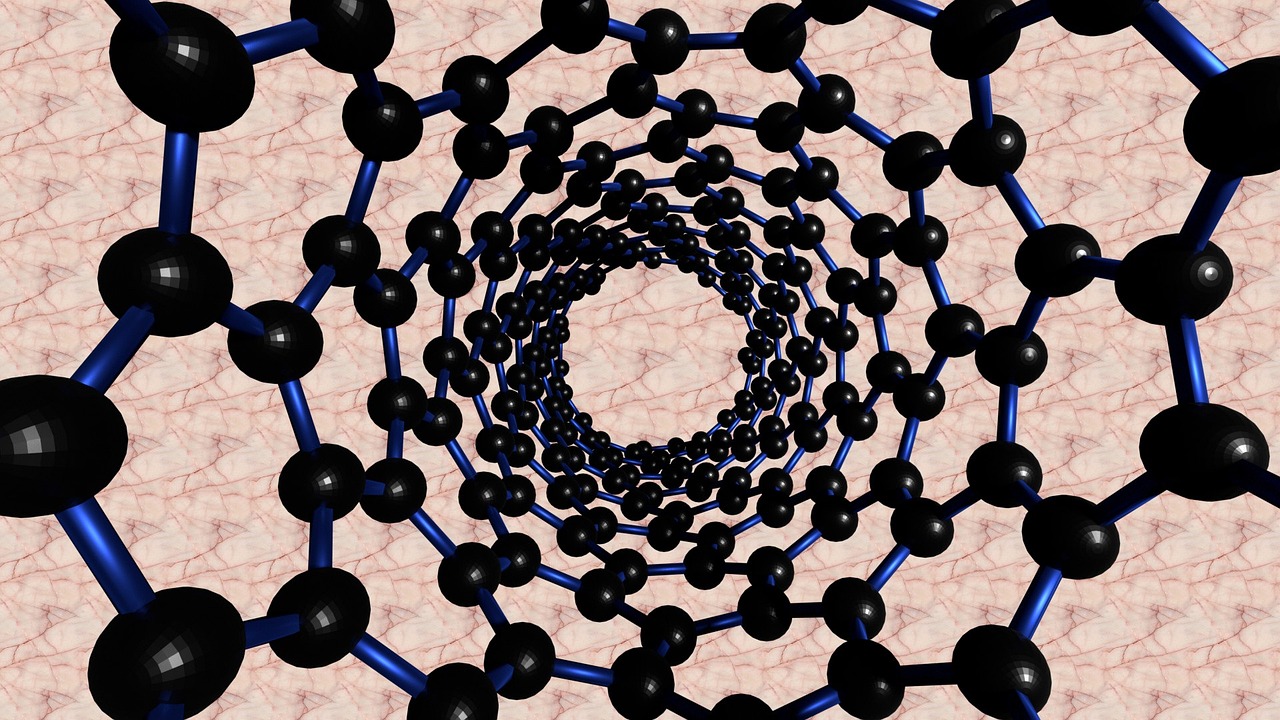
Introduction to Nanotechnology in Defense
Nanotechnology, often described as the science of manipulating matter on an atomic or molecular scale, is making waves in various fields, and defense is no exception. The integration of nanotechnology into military systems is not just a trend; it's a transformative force that is reshaping modern warfare. Imagine tiny machines working at the nanoscale, enhancing everything from materials to sensors, and you start to grasp the immense potential of this technology.
At its core, nanotechnology involves the engineering of materials at the nanoscale—typically between 1 to 100 nanometers. To put this into perspective, a nanometer is one-billionth of a meter, which is about 100,000 times smaller than the diameter of a human hair. This minuscule scale opens up a world of possibilities for creating materials with extraordinary properties. For instance, materials can become stronger, lighter, and more durable, which is crucial in defense applications where every ounce matters.
The military's interest in nanotechnology is driven by the need for enhanced performance and efficiency. As global threats evolve and become more complex, traditional military strategies need to adapt. Nanotechnology offers innovative solutions that can provide a strategic advantage on the battlefield. From advanced weapon systems to improved protective gear for soldiers, the applications of nanotechnology are vast and varied.
One of the key areas where nanotechnology is making a significant impact is in the development of advanced materials. These materials can be engineered to have specific properties tailored for military use. For example, nanocomposites can be designed to be both lightweight and incredibly strong, making them ideal for armor and vehicles. Additionally, the use of nanocoatings can protect military equipment from corrosion and wear, ensuring that critical assets remain operational in harsh environments.
Moreover, nanotechnology is also revolutionizing how we approach surveillance and reconnaissance. The ability to create miniaturized sensors and drones allows for better intelligence gathering without compromising on quality. These advancements not only enhance situational awareness but also improve decision-making processes during critical missions. As we delve deeper into the applications of nanotechnology in defense, it's clear that these tiny solutions are paving the way for big changes in military strategies.
- What is nanotechnology? Nanotechnology is the manipulation of matter on an atomic or molecular scale, typically between 1 to 100 nanometers.
- How is nanotechnology used in defense? It is used to enhance materials, improve surveillance systems, and develop advanced medical technologies for military personnel.
- What are the benefits of nanotechnology in military applications? The benefits include lighter and stronger materials, enhanced durability, improved performance of equipment, and advanced healthcare solutions for soldiers.
- Are there ethical concerns regarding nanotechnology in defense? Yes, there are concerns about potential misuse of nanoweapons and the implications of developing such technologies without proper regulations.

Applications of Nanotechnology in Military Equipment
Nanotechnology is not just a buzzword; it's a game-changer in the realm of military equipment. Imagine a world where soldiers are equipped with gear that is not only lighter but also stronger and smarter. That's the reality nanotechnology is creating. By manipulating materials at the nanoscale, researchers and engineers are developing innovative solutions that enhance the performance and efficiency of military systems. From advanced sensors to lightweight materials, the applications of nanotechnology are as diverse as they are impactful.
One of the most exciting advancements is in the area of nano-coatings. These coatings serve as protective barriers, shielding military assets from environmental damage, corrosion, and wear. Whether it's an aircraft, a vehicle, or even a soldier's uniform, nano-coatings ensure longevity and reliability, even in the harshest conditions. The durability offered by these coatings means that military equipment can withstand the rigors of battle without succumbing to the elements.
Imagine a soldier's gear that can resist scratches, repel water, and even combat bacterial growth. Nano-coatings can achieve all this and more. By creating a thin layer of nanomaterials on surfaces, these coatings enhance the resilience of equipment. For instance, military vehicles outfitted with nano-coatings can avoid rust and degradation, ultimately reducing maintenance costs and downtime. This technology not only preserves the equipment but also ensures that soldiers have reliable tools at their disposal when it matters most.
Another groundbreaking application of nanotechnology in military equipment is the development of self-healing materials. These materials can automatically repair damage, significantly extending the lifespan of critical defense gear. Think of it as a biological process where the material 'heals' itself after being compromised. This capability is particularly vital for equipment exposed to combat scenarios, where even minor damage can lead to catastrophic failures. Self-healing materials can ensure that soldiers remain operational, even after sustaining damage.
When it comes to personal protection, weight is often a critical factor. Heavy armor can hinder mobility, making it challenging for soldiers to perform effectively in the field. Nanotechnology is paving the way for lightweight armor solutions that do not compromise on safety. By utilizing nanomaterials, researchers have developed armor that is both strong and light, allowing soldiers to move freely while still being protected from threats. This innovation is akin to wearing a featherlight shield that can withstand bullets and shrapnel.
In addition to these advancements, nanotechnology is also enhancing military equipment through improved sensors. Miniaturized sensors can be embedded in various systems, providing real-time data and situational awareness. This capability is crucial for surveillance and reconnaissance missions, where understanding the environment can mean the difference between success and failure. These sensors can detect chemical, biological, and radiological threats, making them invaluable in modern warfare.
As we delve deeper into the applications of nanotechnology in military equipment, it's clear that the future looks promising. The integration of these tiny innovations into defense systems not only boosts performance but also ensures that our military personnel are better equipped to handle the challenges of modern warfare. With ongoing research and development, we can expect to see even more revolutionary changes in the coming years.
- What is nanotechnology? Nanotechnology involves manipulating matter on an atomic and molecular scale, typically between 1 and 100 nanometers, to create materials and devices with unique properties.
- How does nanotechnology enhance military equipment? It improves durability, reduces weight, and increases the functionality of military gear, enabling better performance in various conditions.
- What are self-healing materials? These are materials that can automatically repair themselves after being damaged, significantly extending their lifespan and reliability.
- Are there any risks associated with nanotechnology in defense? Yes, potential risks include ethical concerns regarding nanoweapons, environmental impacts, and the need for robust regulatory frameworks to ensure safety.

Nano-coatings for Enhanced Durability
Nano-coatings represent a groundbreaking advancement in the realm of military technology, offering enhanced durability for various military assets. These ultra-thin layers, often just a few nanometers thick, are engineered to provide robust protection against environmental factors such as moisture, corrosion, and wear. Imagine a soldier's gear that can withstand the harshest of conditions—rain, mud, and extreme temperatures—while maintaining its integrity and functionality. This is the promise of nano-coatings.
One of the most significant benefits of nano-coatings is their ability to create a protective barrier that is not only durable but also lightweight. Traditional coatings can add unnecessary weight to military equipment, which can hinder performance and mobility. In contrast, nano-coatings are so thin that they hardly add any weight at all, allowing soldiers to carry more gear without feeling burdened. This is crucial when every ounce counts on the battlefield.
Moreover, nano-coatings can be tailored to meet specific needs. For instance, they can be formulated to be hydrophobic, meaning they repel water and prevent moisture accumulation, which is essential for maintaining the functionality of electronic devices used in combat scenarios. Additionally, their anti-fogging properties can be particularly beneficial for visors and optics, ensuring clear visibility under challenging conditions.
To illustrate the effectiveness of nano-coatings, consider the following table that summarizes their key advantages:
| Advantage | Description |
|---|---|
| Corrosion Resistance | Protects equipment from rust and degradation due to environmental exposure. |
| Weight Reduction | Minimal impact on the overall weight of military gear, enhancing mobility. |
| Customizable Properties | Can be engineered for specific applications, such as water repellency or anti-fogging. |
| Longevity | Extends the lifespan of military assets, reducing the need for frequent replacements. |
In addition to protecting individual items, nano-coatings can also play a vital role in the maintenance of military vehicles and aircraft. By preventing corrosion and wear, these coatings can significantly reduce maintenance costs and downtime. Imagine a fleet of tanks or helicopters that require less frequent repairs, allowing them to remain operational for longer periods. This not only enhances the readiness of military forces but also contributes to overall mission success.
As we delve deeper into the realm of nano-coatings, it becomes evident that their implementation in defense is not just a technological upgrade; it's a revolutionary shift in how we think about durability and protection in military operations. The integration of these advanced materials into military strategies is paving the way for a future where equipment is not only stronger but also smarter, adapting to the challenges of modern warfare.
- What are nano-coatings? Nano-coatings are ultra-thin layers of material applied to surfaces to enhance their protective properties against environmental factors.
- How do nano-coatings improve durability? They provide a protective barrier that resists corrosion, wear, and other forms of damage while being lightweight and customizable.
- Can nano-coatings be applied to all military equipment? Yes, nano-coatings can be tailored for various applications, including clothing, vehicles, and electronic devices.
- What are the cost benefits of using nano-coatings? By extending the lifespan of military assets and reducing maintenance needs, nano-coatings can lead to significant cost savings over time.

Self-Healing Materials
Imagine a world where materials can repair themselves after sustaining damage, just like how our skin heals from cuts and bruises. This is the fascinating promise of , which are rapidly becoming a game-changer in the defense sector. These innovative materials are engineered to automatically mend damage, significantly extending the lifespan and reliability of critical military equipment. In a battlefield scenario, where every second counts, the ability to maintain operational readiness without waiting for repairs can mean the difference between mission success and failure.
Self-healing materials operate on the principle of mimicking biological processes. They contain microcapsules filled with healing agents that are released when the material is compromised. This unique feature allows the material to seal cracks and restore its integrity almost instantaneously. For instance, if a soldier's gear, such as body armor or a tactical vest, gets punctured, the embedded healing agents will activate, filling the breach and restoring the protective qualities of the material. This not only enhances the durability of military assets but also significantly reduces maintenance costs and downtime.
Moreover, self-healing materials can be categorized into two main types: intrinsic and extrinsic self-healing systems. Intrinsic systems have healing capabilities built into their molecular structure, while extrinsic systems rely on external agents to repair damage. Both types have unique applications in defense, from enhancing the resilience of aircraft components to ensuring that vehicles can withstand harsh environments without compromising performance.
Here’s a quick comparison of the two types:
| Type | Description | Application |
|---|---|---|
| Intrinsic | Built-in healing capabilities within the material's structure. | Used in lightweight armor and vehicle components. |
| Extrinsic | Requires external healing agents to repair damage. | Ideal for protective gear and portable equipment. |
As we dive deeper into the realm of self-healing materials, it becomes clear that they hold immense potential for the future of military operations. Not only do they enhance the durability of defense equipment, but they also contribute to soldier safety and operational efficiency. The integration of these materials into military strategies reflects a broader trend towards innovation and resilience in defense technologies. However, as with any emerging technology, it is crucial to consider the implications of their use and ensure that they are developed responsibly.
- What are self-healing materials?
Self-healing materials are engineered substances that can automatically repair damage, enhancing their longevity and performance. - How do self-healing materials work?
They typically contain microcapsules filled with healing agents that are released when the material is damaged, allowing it to seal and restore itself. - What are the advantages of using self-healing materials in defense?
These materials improve the durability of military equipment, reduce maintenance costs, and enhance soldier safety by ensuring gear remains functional even after damage. - Are there different types of self-healing materials?
Yes, they can be categorized into intrinsic systems, which have built-in healing capabilities, and extrinsic systems, which require external agents for repair.

Lightweight Armor Solutions
When you think of military armor, you might picture bulky, heavy materials that weigh soldiers down and hinder their movements. However, thanks to the remarkable advancements in nanotechnology, the future of armor is looking lighter and more effective than ever before. Imagine a suit of armor that feels almost weightless yet provides superior protection against various threats. This is not just a dream; it's a reality that nanotechnology is making possible today.
One of the key innovations in lightweight armor solutions is the development of nanomaterials that are incredibly strong yet remarkably light. These materials can be engineered at the molecular level to enhance their properties, allowing them to absorb impacts, resist penetration, and withstand extreme conditions without adding unnecessary weight. For instance, materials like graphene and carbon nanotubes are being explored for their potential to revolutionize armor design. Graphene, for example, is known for its outstanding strength-to-weight ratio, making it an ideal candidate for creating armor that doesn't compromise on protection.
Moreover, the integration of nanotechnology into armor systems allows for the creation of multi-layered protective structures that can adapt to different threats. This means that, depending on the situation, the armor can provide enhanced protection against ballistic threats, shrapnel, or even chemical agents. The ability to tailor armor solutions to meet specific mission requirements is a game-changer for military operations.
To illustrate the advancements in lightweight armor solutions, consider the following table that compares traditional armor materials with nanotechnology-enhanced materials:
| Material Type | Weight (kg/m²) | Ballistic Resistance | Flexibility |
|---|---|---|---|
| Traditional Kevlar | 10 | Moderate | Low |
| Graphene Composite | 3 | High | High |
| Carbon Nanotube Fabric | 2 | Very High | Moderate |
As you can see, nanotechnology-enhanced materials not only significantly reduce weight but also improve ballistic resistance and flexibility. This means soldiers can move more freely, react faster, and ultimately perform better in the field. The benefits of lightweight armor solutions extend beyond just the individual soldier; they also enhance the overall effectiveness of military units by allowing for quicker maneuvers and more strategic positioning during operations.
In conclusion, the future of military armor is bright, thanks to the innovative applications of nanotechnology. By creating lightweight, durable, and adaptable armor solutions, the military can ensure that its personnel are better protected while maintaining the agility needed to succeed in complex environments. As research continues and technology evolves, we can expect to see even more exciting developments in this area, ultimately leading to a safer and more efficient defense strategy.
- What is nanotechnology? Nanotechnology refers to the manipulation of matter on an atomic or molecular scale, typically at dimensions between 1 and 100 nanometers.
- How does nanotechnology improve armor solutions? Nanotechnology enables the creation of materials that are lighter, stronger, and more adaptable, providing enhanced protection without adding significant weight.
- What materials are commonly used in nanotechnology armor? Common materials include graphene, carbon nanotubes, and various nanocomposites that offer superior strength and flexibility.
- Are there any risks associated with using nanotechnology in defense? Yes, there are ethical and regulatory concerns regarding the potential misuse of nanotechnology, particularly in the development of nanoweapons.
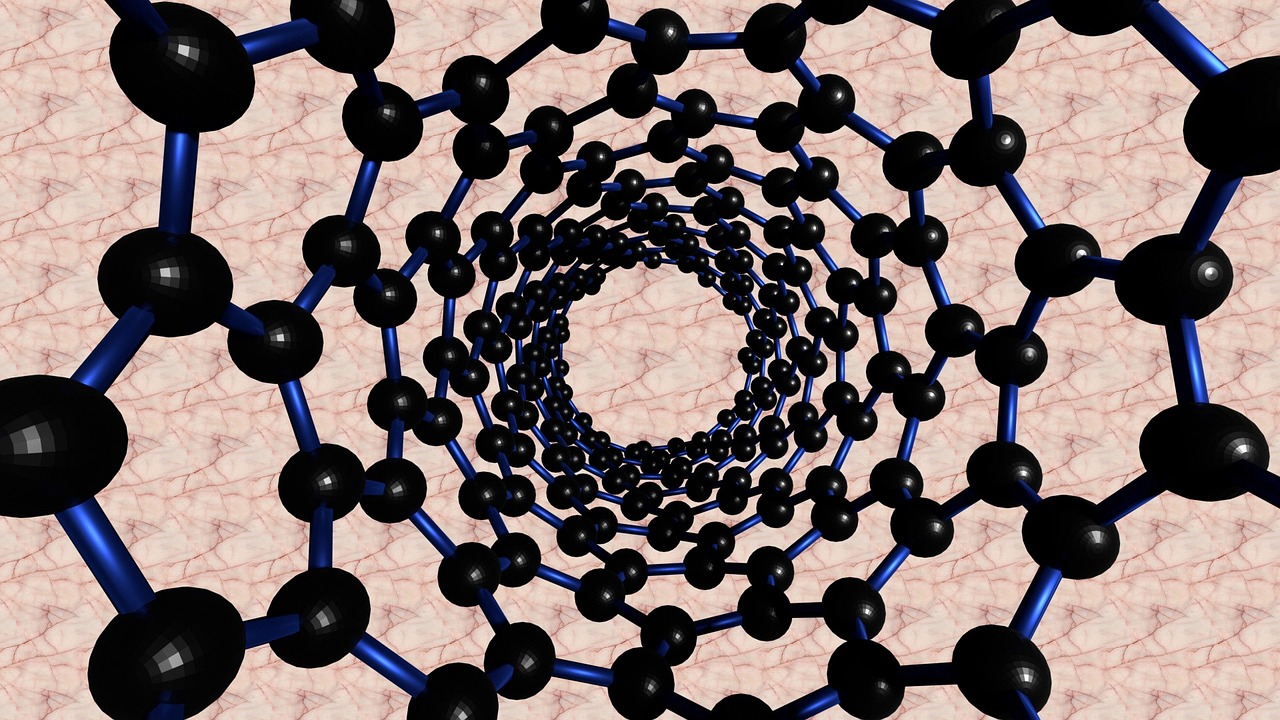
Nanotechnology in Surveillance and Reconnaissance
In the ever-evolving landscape of military operations, surveillance and reconnaissance play pivotal roles in ensuring mission success. The integration of nanotechnology into these domains is not just a game-changer; it’s a whole new ballpark. Imagine a world where drones are not only smaller but also smarter, capable of gathering critical intelligence without being detected. This is the promise that nanotechnology holds for modern military surveillance.
One of the most exciting advancements is the development of miniaturized drones equipped with nanoscale sensors. These drones can navigate challenging terrains, providing real-time data to commanders while remaining virtually invisible to enemy radar. The use of nanotechnology allows these devices to be lightweight yet incredibly efficient, enhancing their operational capabilities. For instance, their small size can enable them to infiltrate areas that larger drones simply cannot access, gathering vital information that could turn the tide of battle.
Additionally, nanosensors are revolutionizing the way data is collected and analyzed. These tiny devices can detect a variety of environmental factors such as chemical signatures, temperature changes, and even biological threats. By integrating nanosensors into military gear and equipment, soldiers can receive immediate feedback on their surroundings, allowing for quicker decision-making in high-stakes situations. Think of it as having a sixth sense; the information provided by these sensors can be the difference between life and death.
Furthermore, the potential for networked systems using nanotechnology cannot be overlooked. Imagine a scenario where multiple nanosensors communicate with one another to create a comprehensive picture of an area. This interconnected web of data can provide commanders with a detailed understanding of enemy movements, fortifications, and even potential ambushes. Such a system would not only enhance situational awareness but also enable strategic planning based on real-time intelligence.
However, as with any technological advancement, there are challenges to consider. The cost of development and deployment of nanotechnology in surveillance is significant. Military budgets often dictate the feasibility of such innovations, and there may be resistance to adopting new technologies due to concerns over reliability and effectiveness. Additionally, ethical questions arise regarding privacy and the potential for misuse of surveillance capabilities.
In conclusion, nanotechnology is set to redefine the future of surveillance and reconnaissance in defense. With its ability to create smaller, smarter, and more efficient systems, it opens up new avenues for intelligence gathering and operational effectiveness. As we move forward, it will be crucial to balance these advancements with ethical considerations and regulatory frameworks to ensure responsible innovation in military applications.
- What is nanotechnology in surveillance? Nanotechnology in surveillance refers to the use of nanoscale materials and devices to enhance the capabilities of surveillance systems, including miniaturized drones and advanced sensors.
- How does nanotechnology improve military reconnaissance? By utilizing smaller, more efficient devices, nanotechnology allows for better data collection and analysis, leading to improved decision-making and situational awareness.
- What are the ethical implications of using nanotechnology in defense? Ethical concerns include privacy issues, the potential for misuse of surveillance technologies, and the need for regulatory frameworks to govern their use.

Nanomedicine in Military Healthcare
When it comes to military healthcare, the stakes are undeniably high. Soldiers are often exposed to challenging environments where injuries can occur in the blink of an eye. This is where nanomedicine steps in, revolutionizing the way we approach medical treatment on the battlefield. Imagine a world where our brave soldiers receive immediate and highly effective treatment for their injuries, all thanks to the incredible advancements in nanotechnology. This is not just a dream; it’s becoming a reality!
One of the most exciting applications of nanotechnology in military healthcare is the development of targeted drug delivery systems. Traditional methods of administering medication can often lead to side effects because they affect the entire body, not just the injured area. However, with nanocarriers, medications can be delivered directly to the site of injury. This precision not only enhances the efficacy of treatments but also minimizes unwanted side effects, allowing soldiers to recover faster and return to duty sooner. Imagine a tiny, smart particle navigating through the bloodstream, seeking out the damaged tissue, and releasing its healing payload right where it’s needed most!
Moreover, the battlefield is often chaotic, and time is of the essence. That’s why diagnostic innovations enabled by nanotechnology are game-changers. Advanced nanosensors can provide rapid and accurate health assessments, allowing medics to make informed decisions quickly. These sensors can detect biomarkers associated with various injuries or conditions, delivering real-time data that can be crucial for effective treatment. For instance, a nanosensor could identify signs of infection much earlier than traditional methods, giving medical personnel the upper hand in managing a soldier's health.
| Application | Description | Benefits |
|---|---|---|
| Targeted Drug Delivery | Nanocarriers deliver medication directly to the injury site. | Increased treatment efficacy, reduced side effects. |
| Nanosensors | Advanced sensors for rapid health assessments. | Real-time data for quicker medical decisions. |
In addition to these advancements, the integration of nanotechnology in military healthcare also paves the way for personalized medicine. By utilizing nanoscale materials, healthcare professionals can tailor treatments to the specific needs of individual soldiers, based on their unique physiological profiles. This could mean the difference between life and death in critical situations, as treatments become more aligned with the body’s response mechanisms.
However, while the potential of nanomedicine in military healthcare is vast, it’s essential to recognize the challenges that come with it. The deployment of such advanced technologies requires rigorous testing and validation to ensure safety and effectiveness. There’s also the need for ongoing education and training for medical personnel to utilize these tools effectively. As we embrace these innovations, we must also remain vigilant about ethical considerations, ensuring that the benefits are realized without compromising the well-being of those we aim to protect.
- What is nanomedicine? Nanomedicine refers to the use of nanotechnology for medical applications, particularly in diagnosis, treatment, and prevention of diseases.
- How does targeted drug delivery work? Targeted drug delivery systems use nanocarriers to transport medications directly to the affected area, enhancing treatment efficiency and minimizing side effects.
- What are nanosensors? Nanosensors are tiny devices that can detect specific biological markers in the body, providing rapid and accurate health assessments.
- Are there any risks associated with nanomedicine? Like any medical technology, nanomedicine comes with potential risks, including the need for thorough testing to ensure safety and efficacy.

Targeted Drug Delivery Systems
In the realm of military healthcare, are emerging as a game-changer, revolutionizing how medications are administered to soldiers on the battlefield. Imagine a scenario where a soldier sustains an injury; instead of traditional methods that often involve systemic administration of drugs, which can lead to side effects and reduced efficacy, nanotechnology steps in with a more precise solution. These systems utilize nanocarriers—tiny particles engineered to deliver drugs directly to the site of injury or disease, ensuring that the therapeutic agents are concentrated where they are needed the most.
One of the most exciting aspects of targeted drug delivery is its potential to enhance treatment outcomes significantly. By minimizing the exposure of healthy tissues to potent drugs, these systems not only increase the effectiveness of the treatment but also reduce the likelihood of adverse reactions. For instance, in the case of pain management or infection control, a targeted approach allows for higher local drug concentrations without the systemic effects that can complicate recovery. This is akin to using a precision-guided missile to hit a specific target rather than carpet-bombing an entire area, which can lead to collateral damage.
Moreover, the design of these nanocarriers can be tailored to respond to specific stimuli, such as changes in pH or temperature, which are often indicative of an injury or infection. This smart delivery system means that the medication is released only when and where it is needed, further enhancing its efficacy. For example, researchers are developing nanocarriers that can release their payload in response to the acidic environment of a tumor or the inflammatory response at a wound site. This kind of targeted approach not only improves the healing process but also aligns with the military's need for rapid and effective medical intervention in high-pressure situations.
To illustrate the advancements in this field, consider the following table that outlines some of the key benefits of targeted drug delivery systems:
| Benefit | Description |
|---|---|
| Increased Efficacy | Delivers higher concentrations of drugs directly to the target area. |
| Reduced Side Effects | Minimizes exposure of healthy tissues to drugs, lowering the risk of adverse reactions. |
| Smart Release Mechanisms | Nanocarriers can be engineered to release drugs in response to specific biological signals. |
| Improved Recovery Times | Faster and more effective treatment leads to quicker soldier recovery. |
As the military continues to seek innovative solutions to enhance soldier health and recovery, the integration of targeted drug delivery systems stands out as a promising frontier. These advancements not only signify a leap in medical technology but also reflect a broader commitment to improving the well-being of those who serve. The implications of this technology extend beyond the battlefield, potentially influencing civilian healthcare practices as well.
- What are targeted drug delivery systems?
Targeted drug delivery systems are advanced medical technologies that use nanocarriers to deliver medications directly to specific sites in the body, enhancing treatment efficacy and minimizing side effects. - How do nanocarriers work?
Nanocarriers are engineered particles that can encapsulate drugs and release them in response to specific biological signals, such as changes in pH or temperature, ensuring that the medication is delivered precisely where it is needed. - What are the benefits of using targeted drug delivery in military healthcare?
Benefits include increased drug efficacy, reduced side effects, smart release mechanisms, and improved recovery times for injured soldiers.
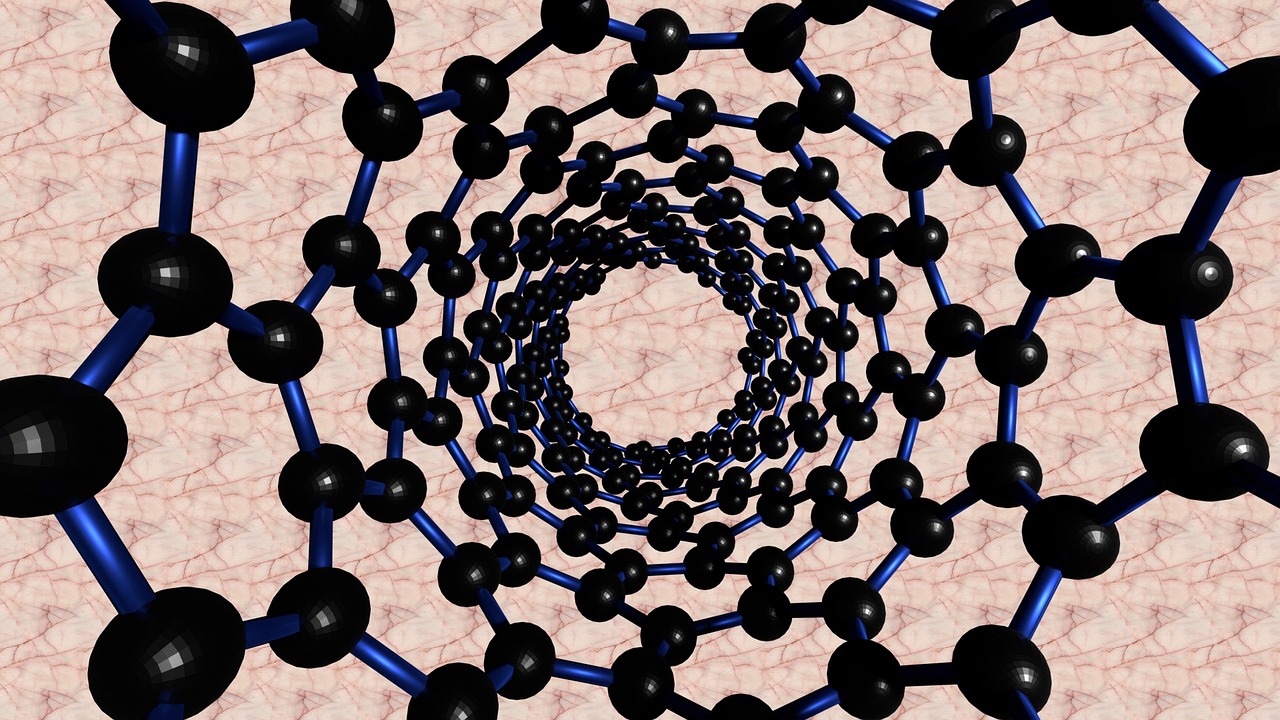
Diagnostic Innovations
In the fast-paced world of military operations, the ability to quickly and accurately assess the health of soldiers is paramount. This is where nanotechnology steps in, acting as a game-changer in the field of diagnostics. Imagine a scenario where a soldier can receive immediate medical evaluation on the battlefield without the need for extensive equipment or time-consuming procedures. Thanks to the breakthroughs in nanotechnology, this vision is becoming a reality.
One of the most exciting advancements in this area is the development of nanosensors. These tiny devices can detect biomarkers in blood or other bodily fluids, providing real-time insights into a soldier's health status. For instance, a nanosensor might be able to identify signs of infection or trauma almost instantaneously, allowing medics to respond with precision and speed. This rapid diagnosis is akin to having a personal health monitor that fits in the palm of your hand, ready to provide critical information at a moment's notice.
Moreover, the integration of nanoparticles in diagnostic tools has led to significant improvements in the sensitivity and specificity of tests. Conventional methods often require larger quantities of samples and can take time to yield results. In contrast, nanotechnology allows for the analysis of minute sample sizes, which can drastically reduce the time it takes to diagnose conditions. For example, a blood test that traditionally takes hours could be completed in mere minutes, providing immediate feedback to medical personnel.
To illustrate the impact of these innovations, consider the following table that highlights some key differences between traditional diagnostic methods and those enhanced by nanotechnology:
| Aspect | Traditional Diagnostics | Nanotechnology-Enhanced Diagnostics |
|---|---|---|
| Sample Size | Requires larger samples | Works with minute samples |
| Time to Results | Hours to days | Minutes |
| Sensitivity | Lower sensitivity | Higher sensitivity |
| Specificity | Variable | Increased specificity |
This transformation in diagnostic capabilities not only enhances the immediate care that soldiers receive but also plays a crucial role in long-term health monitoring. By employing nanotechnology, military healthcare systems can track health trends over time, identifying potential issues before they become critical. This proactive approach is similar to using a fitness tracker to monitor your health, but on a much grander and more impactful scale.
As we look to the future, the potential for nanotechnology in diagnostics seems limitless. From the battlefield to the hospital, these innovations are set to redefine how medical evaluations are conducted, ensuring that soldiers receive the best possible care when they need it the most. The integration of these advanced diagnostic tools not only promises to improve the efficiency of military healthcare but also significantly enhances the overall readiness and effectiveness of armed forces.
- What is nanotechnology in diagnostics? - Nanotechnology in diagnostics refers to the use of nanoscale materials and devices to detect health conditions quickly and accurately.
- How do nanosensors work? - Nanosensors detect specific biomarkers in bodily fluids, providing real-time health assessments.
- What are the benefits of nanotechnology in military healthcare? - Benefits include faster diagnosis, smaller sample size requirements, and increased sensitivity and specificity of tests.
- Can nanotechnology improve soldier recovery? - Yes, by enabling timely and accurate diagnosis, it can lead to more effective treatment and faster recovery times.

Challenges and Ethical Considerations
As we dive deeper into the realm of nanotechnology within the defense sector, it's essential to pause and reflect on the challenges and ethical considerations that accompany this powerful technology. While the potential benefits are enormous, we must also navigate the murky waters of responsibility, safety, and the moral implications of our innovations. The dual-use nature of nanotechnology raises significant concerns. For instance, what if these advancements fall into the wrong hands? The very capabilities that enhance our military might could also be used for nefarious purposes, leading to an arms race in nanoweapons. It's a classic case of "with great power comes great responsibility."
Moreover, the integration of nanotechnology in defense systems presents regulatory challenges. Currently, there is a lack of comprehensive frameworks that adequately address the unique aspects of nanotechnology. Regulatory bodies are often playing catch-up, trying to keep pace with rapid advancements. This gap can lead to inconsistencies in safety standards and practices across different nations and military organizations. Establishing a robust regulatory framework is not just a matter of compliance; it's about ensuring that these technologies are safe for both military personnel and civilians.
Another pressing concern is the ethical implications of deploying nanoweapons. The development of such technologies raises questions about the morality of their use. Are we crossing a line when we create weapons that can operate at the nanoscale, potentially causing harm without direct human oversight? The potential for collateral damage and unintended consequences is significant. Furthermore, how do we ensure that these technologies are used responsibly and do not exacerbate existing global tensions?
To address these challenges, a multi-faceted approach is necessary. This includes:
- Establishing international guidelines for the development and use of nanotechnology in defense.
- Encouraging transparency in research and development processes.
- Fostering dialogue among nations to prevent an arms race in nanoweapons.
- Promoting ethical considerations in military training and strategy formulation.
As we look to the future, it is crucial to balance the drive for innovation with a commitment to ethical practices. We are at a crossroads where the choices we make today will shape the landscape of military technology for generations to come. The question remains: can we harness the power of nanotechnology to enhance our security while maintaining our moral compass? This is the challenge that lies ahead.
- What are the main challenges associated with nanotechnology in defense?
The primary challenges include regulatory gaps, ethical implications of nanoweapons, and the potential for misuse of technology. - How can we ensure the responsible use of nanotechnology in military applications?
Establishing international guidelines, promoting transparency, and fostering dialogue among nations are essential steps. - What are the ethical concerns surrounding nanoweapons?
Ethical concerns include the potential for collateral damage, the risk of escalation in global conflicts, and the morality of using autonomous systems in warfare.

Regulatory Frameworks
As the world of nanotechnology continues to evolve, especially in the realm of defense, the establishment of robust becomes critically important. These frameworks are essential not only for ensuring the safety and efficacy of nanotechnology applications but also for addressing the ethical concerns associated with their use. Governments and international organizations are tasked with creating guidelines that can keep pace with the rapid advancements in this field, ensuring that innovations do not outstrip our ability to manage their implications.
Currently, the regulatory landscape surrounding nanotechnology in defense is somewhat fragmented. Different countries have varying approaches to regulation, which can lead to inconsistencies and potential gaps in safety measures. For instance, while some nations have established comprehensive regulations that specifically address nanomaterials, others are still relying on existing frameworks that were not designed with nanotechnology in mind. This lack of uniformity can pose challenges for multinational defense contractors and can complicate international collaborations.
To better understand the current state of regulatory frameworks in nanotechnology, it is useful to consider the following key areas:
- Safety Standards: Developing safety standards for the manufacture and use of nanomaterials is paramount. This includes assessing potential risks to both human health and the environment.
- Testing Protocols: Establishing standardized testing protocols for nanotechnology products can ensure that they meet safety and performance benchmarks before deployment.
- Transparency and Reporting: Encouraging transparency in research and development processes can help build public trust and facilitate informed decision-making among stakeholders.
Furthermore, as we consider the complexities of integrating nanotechnology into defense systems, it is vital to engage with a variety of stakeholders, including scientists, military leaders, policymakers, and ethicists. This collaboration can lead to the creation of comprehensive frameworks that not only address immediate safety concerns but also anticipate future challenges. For example, addressing the potential for dual-use technologies—where advancements in nanotechnology could be applied for both beneficial and malicious purposes—requires a nuanced understanding of the implications of these technologies.
In conclusion, while the potential of nanotechnology in defense is vast, the establishment of effective regulatory frameworks is crucial for harnessing its benefits while minimizing risks. As we move forward, ongoing dialogue and collaboration among all stakeholders will be essential to create a regulatory environment that is both responsive and responsible.
- What is nanotechnology? Nanotechnology involves manipulating matter at the atomic or molecular level, typically at scales of 1 to 100 nanometers, to create materials and devices with unique properties.
- How does nanotechnology benefit the defense sector? It enhances military capabilities through improved materials, advanced sensors, and innovative healthcare solutions for soldiers.
- What are the main regulatory challenges? The main challenges include inconsistent regulations across countries, the need for specific safety standards, and addressing ethical implications of nanotechnology.
- Why are ethical considerations important in nanotechnology? Ethical considerations are vital to prevent misuse, ensure responsible innovation, and maintain public trust in the technologies being developed.
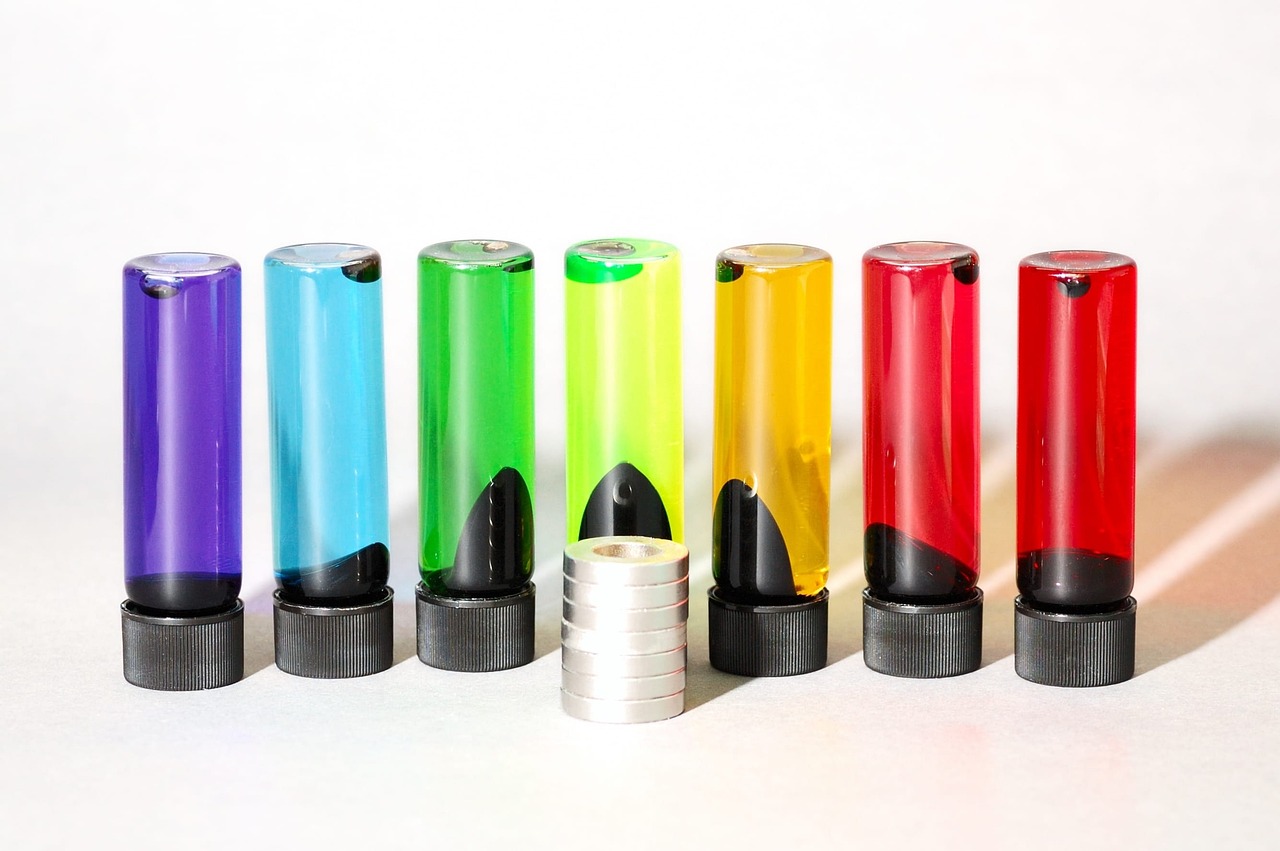
Ethical Implications of Nanoweapons
As we delve into the realm of nanotechnology, particularly its military applications, we encounter a complex web of ethical considerations surrounding the development and deployment of nanoweapons. These are not just tools of war; they represent a profound shift in how conflicts may be conducted, raising questions that go beyond the battlefield. The very nature of nanoweapons—capable of causing destruction at an unprecedented scale and precision—invites scrutiny into their moral implications.
First and foremost, one must consider the potential for misuse. With the power to manipulate matter at the atomic level, the creation of weapons that can target specific biological systems or infrastructure could lead to scenarios where such technology falls into the wrong hands. Imagine a world where rogue states or non-state actors harness nanoweapons to disrupt economies or launch targeted attacks. This raises critical questions about global security and the balance of power.
Moreover, the impact on civilian populations cannot be overlooked. The precision of nanoweapons may lead to a false sense of security, encouraging military actions that could otherwise be deemed unacceptable. For instance, if a military force believes they can deploy a nanoweapon with minimal collateral damage, they might be more inclined to use it. This could blur the lines of traditional warfare ethics, where the protection of civilian life is paramount.
Another significant concern is the environmental impact of nanoweapons. The materials used in these weapons, particularly if not properly managed, could lead to unforeseen consequences on ecosystems. The long-term effects of releasing nanomaterials into the environment remain largely unknown, raising alarms about sustainability and responsibility. Just as we are beginning to understand the implications of plastic pollution, we may be on the brink of a new environmental crisis with nanotechnology.
To address these concerns, it is essential to establish a robust regulatory framework surrounding the development and use of nanoweapons. This framework should include international agreements that outline acceptable uses of nanotechnology in military applications, much like the treaties that govern chemical and biological weapons. It is vital to engage in dialogue among nations, scientists, and ethicists to create guidelines that ensure the responsible use of this powerful technology.
In summary, while nanotechnology holds incredible potential for advancing military capabilities, the ethical implications of nanoweapons cannot be ignored. As we stand at the crossroads of innovation and morality, it is crucial to navigate this landscape with caution, ensuring that the development of such technologies is guided by principles that prioritize human life, environmental sustainability, and global security.
- What are nanoweapons? Nanoweapons are advanced military technologies that utilize nanotechnology to create weapons capable of precise targeting and destruction at a microscopic level.
- Why are the ethical implications of nanoweapons important? The ethical implications are crucial because they address the potential for misuse, impact on civilian populations, and environmental consequences, which can have far-reaching effects on global security and morality.
- How can we regulate nanoweapons? Establishing international agreements and regulatory frameworks that outline acceptable uses and guidelines for nanotechnology in military applications can help ensure responsible development and use.
- What is the potential impact of nanoweapons on warfare? Nanoweapons could fundamentally change warfare by allowing for more precise and targeted attacks, which might lead to a higher likelihood of their use in conflicts, potentially blurring the lines of ethical warfare.
Frequently Asked Questions
- What is nanotechnology in defense?
Nanotechnology in defense refers to the application of nanoscale materials and processes to enhance military capabilities. It involves manipulating matter on an atomic or molecular scale to create materials with unique properties that can improve everything from weapon systems to medical care for soldiers.
- How does nanotechnology improve military equipment?
Nanotechnology enhances military equipment by providing lightweight materials, advanced sensors, and improved durability. For example, nano-coatings can protect equipment from environmental damage, while self-healing materials can automatically repair themselves, extending the life of critical assets.
- What are self-healing materials?
Self-healing materials are innovative substances that can automatically repair damage when it occurs. In a military context, this means that equipment can recover from wear and tear without needing manual repairs, thus increasing reliability and operational readiness.
- Can nanotechnology be used in military healthcare?
Absolutely! Nanotechnology is revolutionizing military healthcare through advanced diagnostic tools and targeted drug delivery systems. This means that soldiers can receive more effective treatments with fewer side effects, significantly improving their recovery times on the battlefield.
- What are targeted drug delivery systems?
Targeted drug delivery systems utilize nanocarriers to transport medications directly to specific areas of the body. This precision enhances the effectiveness of treatments for injured soldiers while minimizing potential side effects, making it a game-changer in military medicine.
- What ethical considerations are associated with nanotechnology in defense?
The integration of nanotechnology in defense raises several ethical concerns, particularly regarding the potential development of nanoweapons. Issues such as the risk of misuse and the implications for global security dynamics must be carefully considered to ensure responsible innovation.
- Are there regulatory frameworks for nanotechnology in defense?
Yes, there are ongoing discussions about establishing regulatory frameworks for nanotechnology in defense. These guidelines are essential to ensure the safety and effectiveness of nanotechnology applications, addressing concerns related to health, environmental impact, and military ethics.











